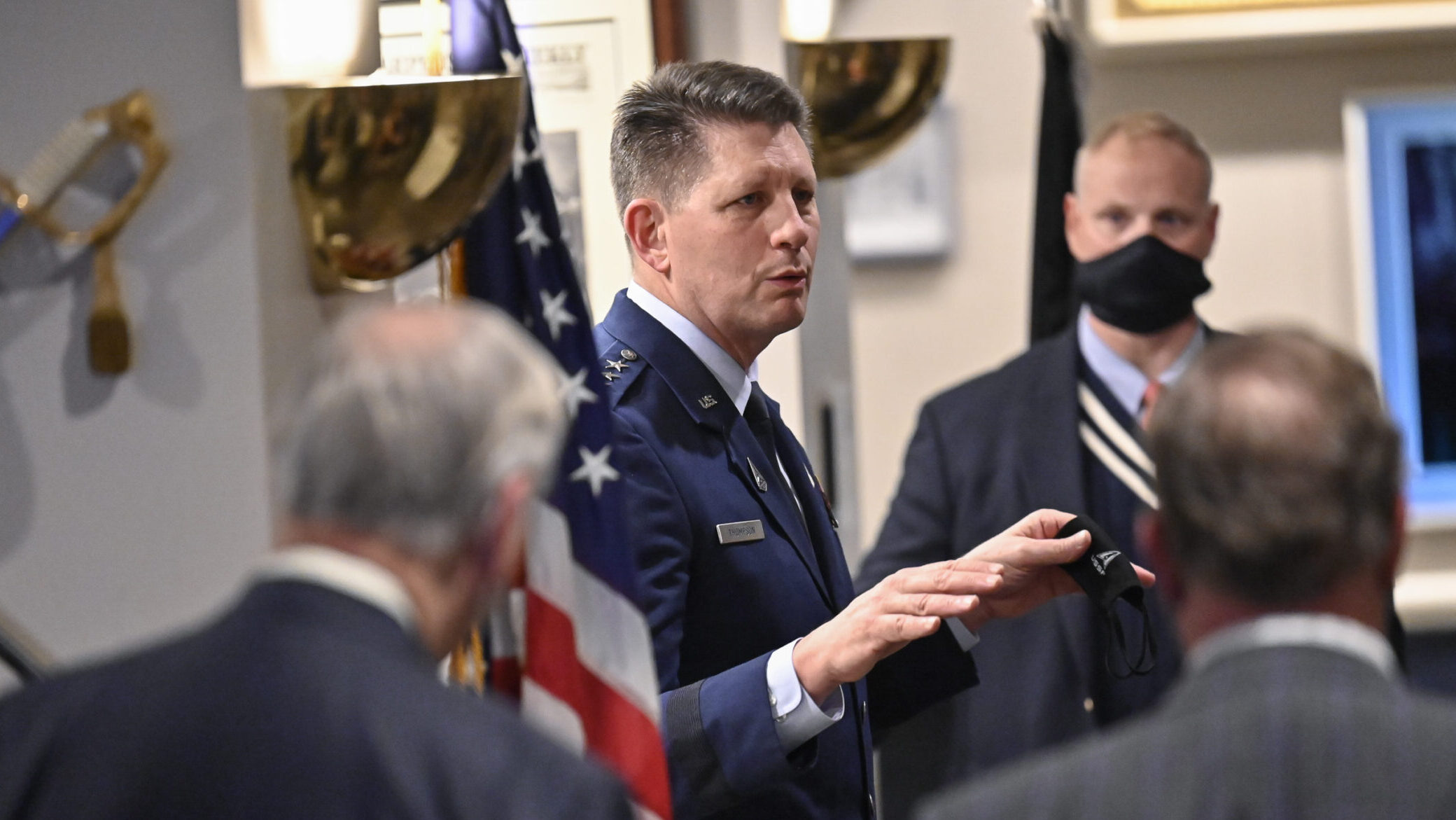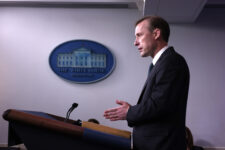
Vice Chief of Space Operations Gen. David D. Thompson makes remarks at The Army and Navy Club in Washington, D.C. during a reception welcoming members of the U.S. Space Force to join the club, Jan. 5, 2022. Thompson spoke about the mission of the Space Force. (U.S. Air Force photo by Eric Dietrich)
WASHINGTON: The Space Force’s new training strategy will combine traditional development and operational testing into one regime — a move that senior officials say should reduce costs and speed acquisition of new capabilities.
The key is that integrated testing “will save time,” Vice Chief of Space Operations Gen. David “DT” Thompson told reporters on Tuesday, in a briefing on the service’s new Space Test Enterprise Vision.
“Instead of conducting two separate tests, with two separate test scores at two different times, we’ll both reduce schedule and then, we think, we’ll be more efficient — just because we’ll conduct a single integrated test activity that will cut down on the requirements for both the developmental test and operational tests,” he said. “So, we’ve got to prove that execution and gather data to show that it is, but we absolutely believe we will save money.”
Maj. Gen. Shawn Bratton, the head of Space Training and Readiness Command (STARCOM), explained that traditionally the Defense Department differentiates “between developmental test, which lies generally with the acquisition community to test the equipment against specifications. And then operational test, where we swing it over to the operation side and we really explore resiliency in the system — how does it perform in the environment and what is the performance parameters of the system?”
Space Force instead is going to explore integrating those two efforts, “where we would have perhaps a single test activity different, provide data to Space Systems Command for developmental testing purposes, as well as back to myself and STARCOM for operational test purposes. But we think if we can integrate the test activities, it’ll let us be more efficient faster, and speed up the testing part of the acquisition process.”
Bratton noted that Space Force officials have been working with the Defense Department’s Office of Operational Test and Evaluation as it stands up its testing plans, and that other services also are experimenting with the concept of integrating testing.
“So, we’re not completely on our own on this, but I think we are all in on it,” he said.
Bratton said that STARCOM is still working to develop an “architecture” for the future National Space Test and Training Complex (NSTTC), but that initial work has been done that has fed into the Space Force’s investment strategy for testing and training operations, including for the fiscal 2024 budge cycle now in the early planning stages across DoD.
“I don’t have in my hands a draft architecture document. What I staffed through was sort of: ‘Here’s the capabilities that we need to have for the NTTSC, and here’s where we’re going to invest in those capabilities and technologies for fiscal year ’24’,” he said.
Thompson said that Space Force has about $70 million in fiscal 2022 and $89 million in 2023 funds “specifically related to what I’ll call enhancing the Test and Evaluation enterprise.”
However, he explained that those sums don’t cover all investment in testing and training activities.
“There’s a whole lot of additional investment that supports it and enhances it, not captured in those numbers,” Thompson said. “For example, we’ve got a functioning test and training range today to the tune of about $20 million a year that will support that enterprise. There’s a large manpower investment to support those activities and Deltas. There’s modeling and simulation that goes on in Space Systems Command and Space Warfighting and Analysis Center and others that will provide models that help with that.”
Modeling is crucial to the future NTTSC, because testing and training will largely take place in the digital domain, Bratton noted.
As he told reporters in a briefing last month, STARCOM faces challenges in undertaking live testing and training on-orbit, due to legal, technical and cost constraints. The 1967 Outer Space Treaty, signed by most of the world’s nations, bars any one country from claiming sovereignty over portions of outer space or over celestial bodies, such as the Moon. Further, even small satellites are not cheap to launch. And unlike the other services, the Space Force doesn’t have old spare satellites floating around (literally and figuratively) that can be given to trainees to play with.
Digital models and simulations will thus be key to both testing and training. Bratton on Tuesday stressed that the idea is to “reuse” digital models developed and validated by the Space Warfighting Analysis Center (SWAC) for the development of force design, then provided to the acquisition gurus at Space Systems Command (SSC) to develop new weapon systems. In turn, he said, STARCOM will provide feedback to SWAC and SSC that will allow them to refine the models.
The upshot, Bratton said, is that the NTTSC won’t be a single facility.
“I don’t envision that it’s all located in one place. And the reason I say that is because we’re really working hard on connectivity in what what we think of as the digital range or the digital aspect of the NTTSC in connectivity back to the program offices, and all the way back to the SWAC,” he said.
Russia vetos US-Japan resolution against nukes in space, ‘unprecedented escalation’ in UN fight
“Although Russia would not be expected to vote for a resolution aimed at its own conduct, its response that it is ‘against’ putting nuclear weapons in space is just vague enough to not quite be reassuring,” said Jessica West of Canada’s Project Ploughshares.


























